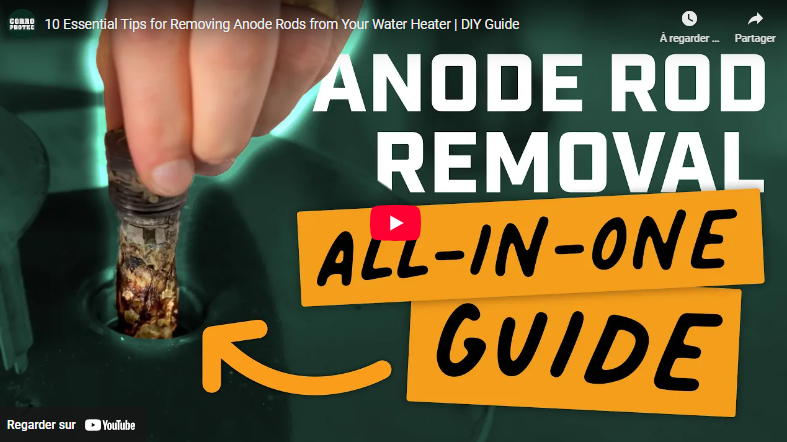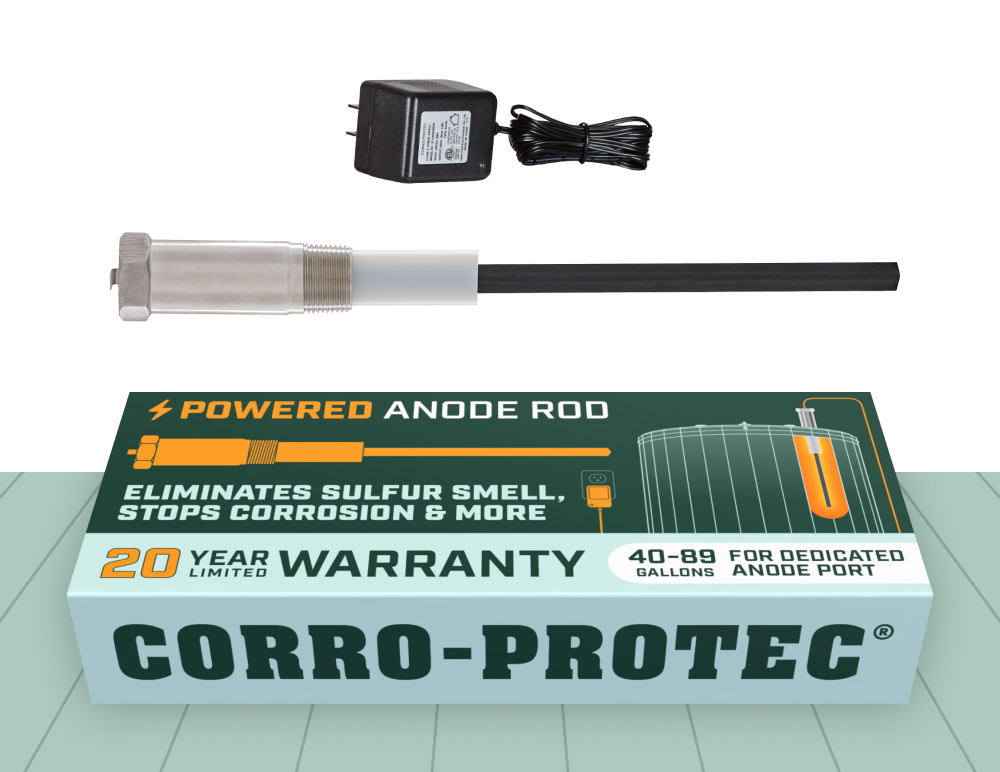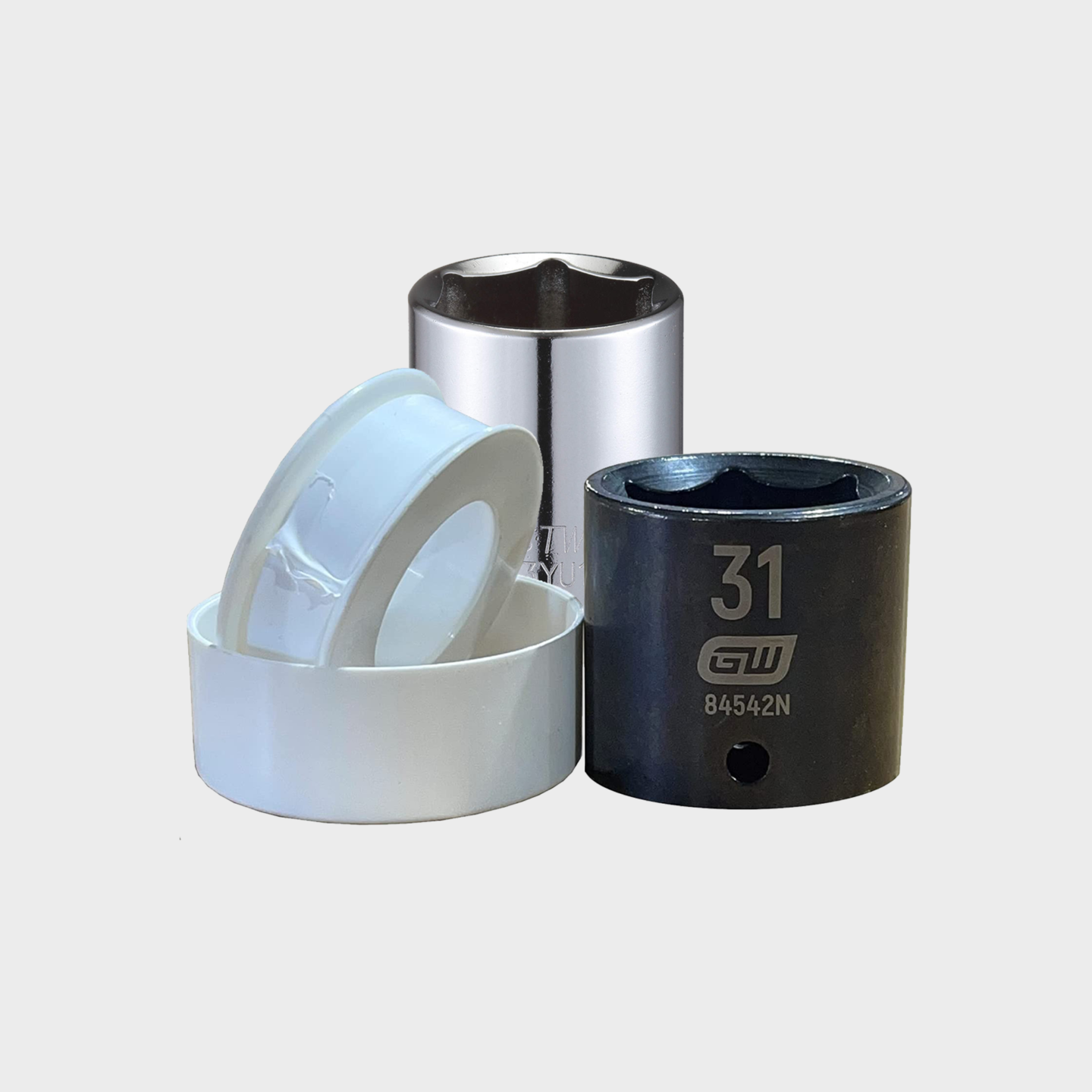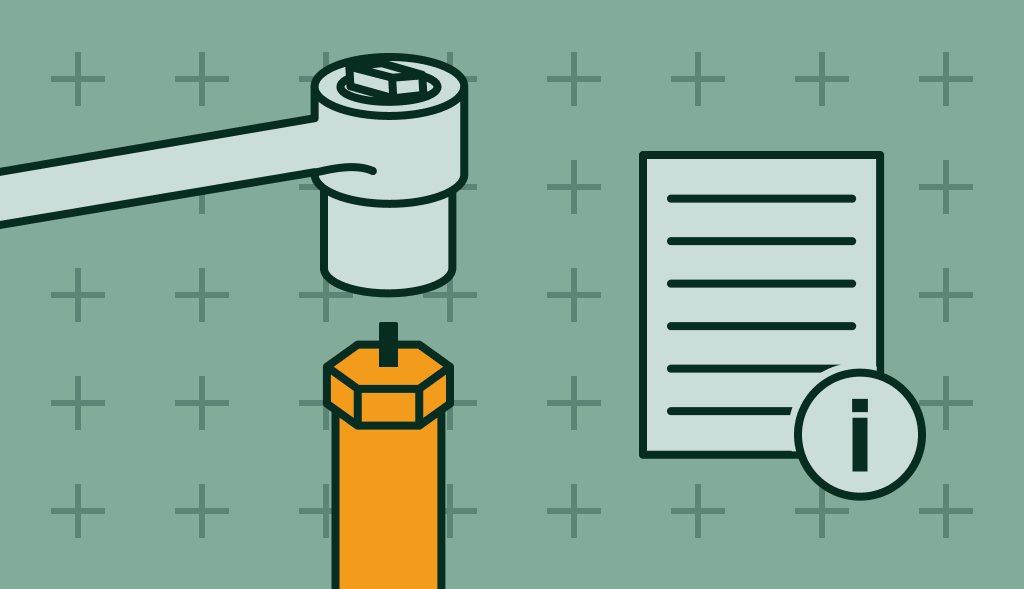Reliance Water Heater Anode Rods : Location, Options & Replacement
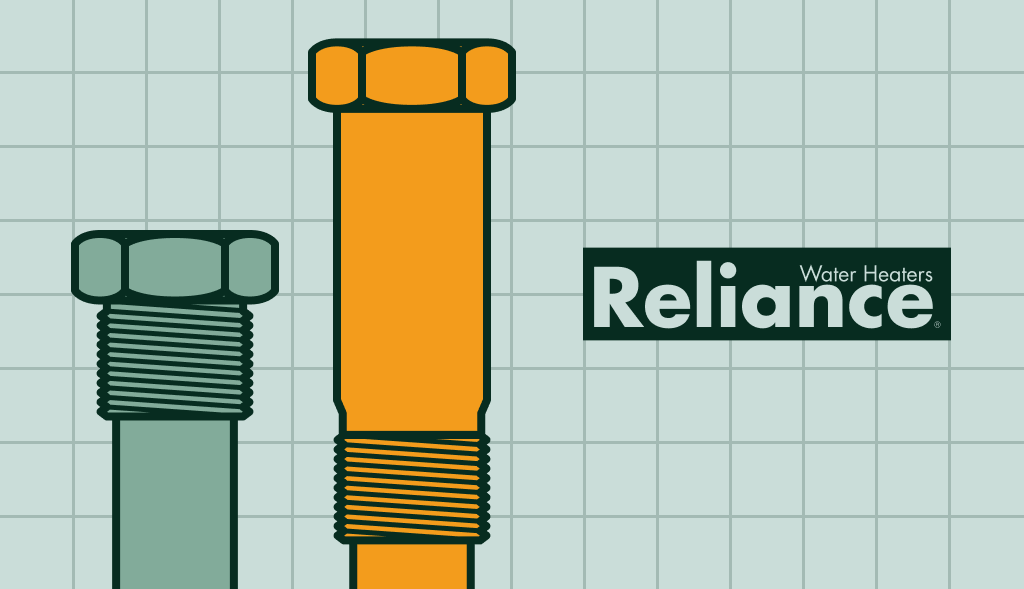
If you own a Reliance* water heater, there is a crucial part that quietly shields the steel tank from rust: the anode rod.
This often-overlooked component is of utmost importance, and understanding where to find it, how it works, and why powered replacements last longer than the factory magnesium version can give you peace of mind about the reliability of your water heater.
What Is an Anode Rod?
An anode rod is a metal shaft, usually magnesium, that threads into the top of your hot‑water tank. Its job is to corrode, so the tank walls don’t. For a deeper dive into the chemistry, see What Is an Anode Rod?
Reliance Water Heater Anode Rod Location
Each Reliance water heater model has a specific anode rod location. Consult your digital or printed water heater owner’s manual for easy guidance.
Gas & Electric Standard Models: The anode rod is typically located under a 1‑1/16‑inch hex-head plug on the top of the tank, in the center-top port next to the hot-water outlet.
Reliance 606 Water Heater Anode Rod: Locate it in the same position as a standard model, identifying the hex nut stamped “ANODE.”
Side-Connection Tanks: Some low-boy electric units have the anode hidden inside the hot-water outlet nipple.
Quick Tip
If you’re having trouble locating the plug, take a picture of the rating label and use it to identify the part in the Reliance Home Comfort diagram.
Types of Anode Rods for Reliance Water Heaters
Regular maintenance is crucial for ensuring the longevity and efficiency of your water heater. The stock anode rods included with your Reliance water heater are 9000029–005 (29-inch aluminum) and 9001829005 (32-inch magnesium). Most hot water tanks come equipped with a standard magnesium anode rod, which typically dissolves within 1 to 5 years, depending on water quality.
Factors such as water hardness, the presence of a water softener, or elevated chlorine levels can accelerate this process. Constant evaluation is recommended to ensure continued protection against corrosion.
| Powered Anode Rod | Magnesium Anode Rod | Aluminum Anode Rod(Zn-Alloy) | |
|---|---|---|---|
| Type | Titanium (Impressed-Current) | Sacrificial | Sacrificial |
| Typical Lifespan* | 25+ yrs | 1 to 3-5 yrs | 2 to 4-6 yrs |
| Lifetime Cost* | $159.99 | $199.99 to $999.99 | $209.99 to $599.99 |
| Typical Price* | $159.99 | $39.99 | $49.99 |
| Energy savings | Reduces energy bills by $40/year by preventing sediment buildup | Increase energy use due to sediment buildup | Increase energy use due to sediment buildup |
| Anode Rod Replacement |
Never |
Frequently |
Frenquently |
| Corrosion Protection |
Stops corrosion |
Failing to replace the anode rod before it’s depleted means water heater corrosion/failure will resume; regular inspection is key |
Lose their effectiveness over time. To ensure continued protection against corrosion, timely replacement is essential |
| Sulfur smell elimination | Eliminates & Prevents sulfur smell in hot water within 24 hours, no matter the cause | Can react with certain water types, producing an unpleasant sulfur smell in hot water | Can help reduce sulfur smell in hot water |
| Sediment Build-Up | Reduces sediment accumulation | Can cause sediment buildup in the tank when the anode is deteriorated | Can cause sediment buildup in the tank when the anode is deteriorated |
| Water Quality | Best for any water chemistry (soft or hard water) | Good for any water chemistry but will deteriorate more quickly in hard water | Good for any water chemistry but will deteriorate more quickly in hard water |
| Inspect | No anode rod inspection |
Hard/Well water: yearly Soft city water: every 2 yrs |
Hard/Well water: yearly Soft city water: every 2 yrs |
| Replace | No anode replacement. Controller sounds/LED alerts after ~20 yrs |
Anode rod replacement Hard/Well water: 2 to 3 yrs Soft city water: ~5 yrs |
Anode rod replacement Hard/Well water: 4 to 6 yrs Soft city water: ~5 yrs |
| Odor Notes | Ends odor completely in less than 24 hours | Can cause sulfur smell over time | Helps reduce smell, not always fully |
Flushing Your Reliance Water Heater
| Water Quality | Flush Frequency | Why It Matters |
|---|---|---|
| All Water Types (Corro-Protec Powered Anode Rod Installed) | As needed | Powered rods eliminate odors, do not create sediment; flushing maintains efficient heat transfer. |
| Hard / Well Water | Every 6 months | Removes heavy mineral scale and iron bacteria that can eat away at anodes and cause a rotten-egg odor. |
| Soft, Treated City Water | Annually | Clears light sediment, allowing the heater to run efficiently and facilitating anode inspection. |
When to Replace Your Reliance Water Heater Anode Rod
Stick a socket on the hex head and lift the rod. Replace it when:
- More than 50 percent of the core metal is gone.
- The rod is coated with calcium that can’t be chipped off.
- You smell sulfur despite flushing the tank.
DIY Replacement
- Cut power or gas to the heater.
- Close the cold‑water inlet valve.
- Drain 1 foot from the drain valve to relieve the pressure.
- Use the socket and breaker bar to loosen the anode rod. (Tap gently with a rubber mallet if it’s stubborn.)
- Lift the rod straight up; watch for overhead clearance.
- Thread the new rod (or powered kit) in hand‑tight, then snug with the wrench.
- Open the cold‑water valve, bleed air from a hot tap, and restore power or gas.
Need visuals? Our installation guide guides you through each step with clear, step-by-step photos. You can also watch the following video if you prefer.
Why a Powered Anode Rod Beats the Standard
By using a powered anode rod, you’re not just protecting your tank walls; you’re also investing in peace of mind. This safe and reliable technology ensures that corrosion has nowhere to start, giving you confidence in the safety and longevity of your water heater.
Top Five Benefits
1. Stops tank corrosion
2. Reduces limescale accumulation
3. Eliminates sulfur smell in hot water
4. Extends water heater life
5. Energy-Saving – read on
A standard magnesium anode rod costs $30 to $50 and needs to be swapped every one to five years. Over the life of your water heater, that’s between $199.99 to $999.99 plus plumber visits. In contrast, a powered rod costs the same upfront and pays you back in fewer leaks and with zero odor.
Plus, one powered anode rod covers the lifespan of multiple water heaters and can be easily transferred. Corro-Protec powered anodes can save up to $40 per year in the U.S. and $30 in Canada on electricity bills (water heating costs).
How to Install a Powered Anode in a Reliance Water Heater
Installation is easy, and as long as you have teflon tape, a universal plier, ratchet wrench, Robertson screwdriver, 1 3/16” (31 mm) and 1 1/16” (27 mm) 6-point sockets, you can do it yourself! For detailed instructions on installing a powered anode rod, refer to our comprehensive guide.
Compatibility Quick‑Look
| Reliance Models | Stock Rod | Powered Anode Rod Fit? | Notes |
|---|---|---|---|
| Conventional 40–50‑gal. | Magnesium | Yes | Recommended upgrade |
| Direct Vent Units | Magnesium | Yes | Use a proper thread adapter, recommended upgrade |
| Tankless | N/A (no tank) | N/A | Heat exchanger uses different tech |
Remember, your Reliance water heater is only as good as its anode rod. Standard magnesium rods work, but only for a few years, and they can turn your water smelly in the process.
Upgrading to a powered anode rod eliminates odor and can add a decade or more to your tank’s service life. So, make the switch to the Corro‑Protec Powered Anode Rod today and enjoy rust‑free, smell‑free water for years.
FAQ
The anode rod in your Reliance water heater is located on top of your tank. For most Reliance water heaters, the anode rod is located in a dedicated anode port and can typically be found under a plastic cap and a foam-insulated layer on the top of the tank. It may be necessary to remove this insulation to gain access to the rod.
Here are some standard locations of the water heater anode rod :

UNCERTAIN ABOUT THE LOCATION OF THE EXISTING ANODE ?
Consult your Reliance digital or printed water heater owner’s manual for easy guidance.
*Reliance is a registered trademark of Reliance Home Comfort. Corro-Protec is not affiliated with, endorsed by, or sponsored by Reliance Home Comfort.
Blog
Anode Rod Socket Size: Quick & Easy Guide
Anode rods are very important in all water heaters. They keep the water tank from rusting, so your heater can last longer. But, sacrificial anode […]
What is an Anode Rod?
You might have heard about an anode rod if you have a hot water heater. But what exactly is it, and why is it important? […]
